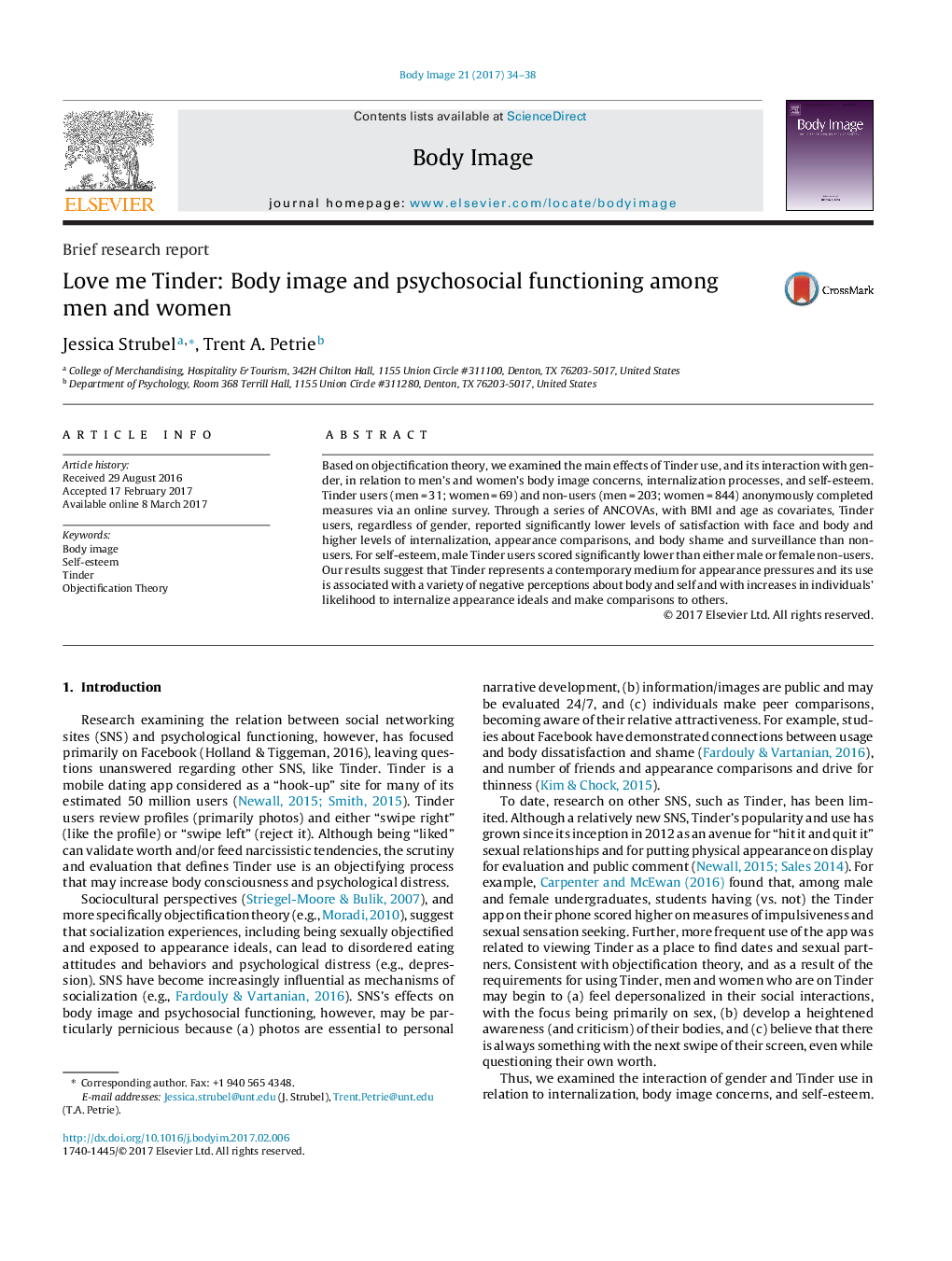| Article ID | Journal | Published Year | Pages | File Type |
|---|---|---|---|---|
| 5038409 | Body Image | 2017 | 5 Pages |
â¢Tinder users reported lower levels of satisfaction with their faces and bodies.â¢Male and female users experienced similar levels of psychological distress.â¢Tinder users experience higher levels of shame about their bodies.â¢Tinder users were more focused on their bodies as sexual objects.â¢Men, actively involved with Tinder, reported lower levels of self-esteem.
Based on objectification theory, we examined the main effects of Tinder use, and its interaction with gender, in relation to men's and women's body image concerns, internalization processes, and self-esteem. Tinder users (men = 31; women = 69) and non-users (men = 203; women = 844) anonymously completed measures via an online survey. Through a series of ANCOVAs, with BMI and age as covariates, Tinder users, regardless of gender, reported significantly lower levels of satisfaction with face and body and higher levels of internalization, appearance comparisons, and body shame and surveillance than non-users. For self-esteem, male Tinder users scored significantly lower than either male or female non-users. Our results suggest that Tinder represents a contemporary medium for appearance pressures and its use is associated with a variety of negative perceptions about body and self and with increases in individuals' likelihood to internalize appearance ideals and make comparisons to others.
